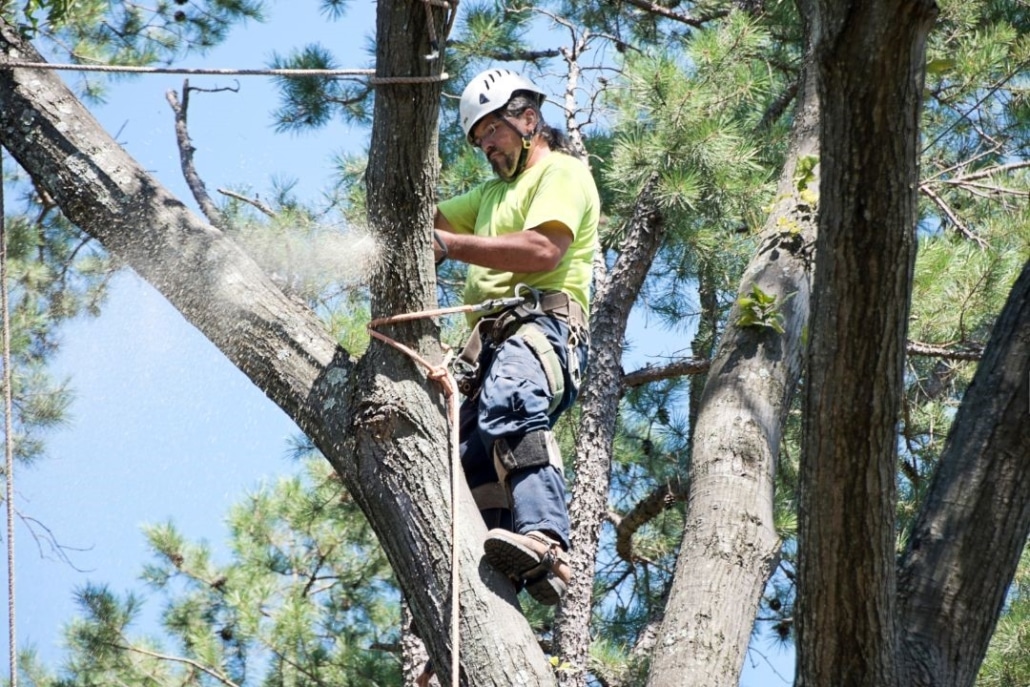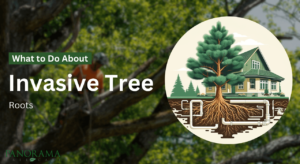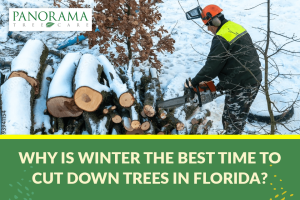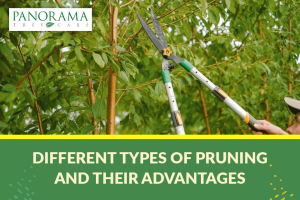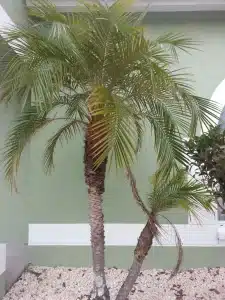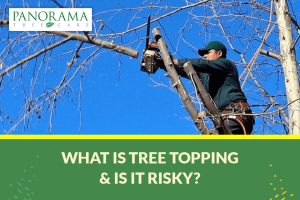Trimming and pruning oak trees in Florida are crucial practices that not only enhance the aesthetic appeal of your yard but also promote the healthy growth and longevity of the trees.
The unique climate and ecosystem of Florida make it essential to approach tree trimming with local knowledge and specific considerations in mind.
So, if you are hesitant to take up the trimming of oak trees or you do not have the time or equipment, you can always hire tree service tampa experts like us.
But before you start trimming yourself, there is some basic information that you need to know.
We present to you the top 5 tips that you need to know before trimming oak trees. Spread across important categories, these tips will make the job easier for you, in the absence of an arborist.
Tip 1: Understand Your Oak Tree
Florida is home to a variety of oak species, each with its own set of characteristics and care requirements.
The state’s warm climate and distinct seasons can influence the growth, health, and maintenance needs of these trees. Here’s what you need to know:
Identify Your Oak Species
- Species Variety: Among the many oak species in Florida, some of the most common include the Live Oak, Southern Red Oak, and Water Oak. Each species has unique traits affecting its sunlight, water, and soil preferences.
- Growth Habits: Understanding your oak’s growth habits is crucial. For instance, Live Oaks are known for their sprawling branches and can create wide shades, while Southern Red Oaks have a taller, more upright growth pattern.
Climate Adaptation
- Sunlight and Watering: Most oaks in Florida are adapted to the state’s sunny conditions but have different water requirements. For example, Water Oaks, as their name suggests, thrive in wetter conditions compared to other oaks that might prefer well-drained soil.
- Susceptibility to Diseases: Florida’s humidity and warmth can foster conditions for diseases like Oak Wilt or pests that target oak trees. Identifying your oak species can help in understanding its vulnerability to these issues.
Importance of Regular, Careful Trimming
- Health and Appearance: Regular trimming helps in removing dead or diseased branches, improving air circulation, and allowing more light to reach the inner parts of the tree. This not only enhances the tree’s appearance but also its overall health.
- Best Practices: It’s essential to trim during the correct time of year to avoid exposing the tree to pests and diseases. For Florida oaks, late winter to early spring (before the new growth starts) is generally the best time. This minimizes stress on the tree and reduces the risk of disease transmission.
- Professional Insight: Given the variety of oaks and the unique environmental conditions in Florida, consulting with a local arborist can provide tailored advice. They can identify the oak species, assess its condition, and recommend specific trimming practices to support its health and growth.
Understanding your oak tree’s needs is foundational to proper care and maintenance. By identifying the species and familiarizing yourself with its requirements and vulnerabilities, especially within Florida’s unique ecosystem, you can ensure that your oak trees remain healthy, strong, and beautiful for years to come. Engaging with professionals for advice or services, especially when dealing with large trees or complex situations, can be a wise decision to maintain the safety and health of your oaks.
Tip 2: Equip Yourself with the Right Tools and Knowledge
Expanding on Tip 2 from our focus on trimming oak trees in Florida, equipping yourself with both the right tools and the necessary knowledge is fundamental. Let’s break down what this means in more detail, especially for the unique conditions found in Florida.
Selecting the Right Tools
Essential Tools for Trimming
- Pruning Shears: Ideal for small branches and perfect for precise cuts. Ensure they are sharp and clean for each use.
- Lopping Shears: With longer handles, these are great for branches that are slightly thicker, up to about 2 inches in diameter, allowing you to reach higher without a ladder.
- Rope Saw: Useful for even thicker branches, this tool allows you to cut from the ground without climbing. It’s especially handy for Florida’s taller oak species.
- Chainsaw: Necessary for the largest branches. A chainsaw can make quick work of thick branches but requires careful handling to ensure safety.
- Pole Pruner: A pole pruner can be invaluable for reaching higher branches without needing to use a ladder, offering both reach and precision.
Safety Equipment
- Hardhat: Protects your head from falling branches, a common hazard when trimming trees.
- Safety Goggles: Essential for protecting your eyes from wood chips, dust, and debris.
- Gloves: Thick gloves can protect your hands from sharp edges and splinters.
- Protective Clothing: Long sleeves and pants can help shield your skin from cuts and scratches.
Knowledge and Technique
Cleaning and Maintenance
- Clean tools before and after use to prevent the spread of diseases. A simple solution of water and bleach or rubbing alcohol can disinfect tools effectively.
- Regularly sharpening tools ensures cleaner cuts that heal faster and reduce stress on the tree.
Trimming Techniques
- Proper Cutting Technique: Always cut just outside the branch collar (the swollen area where the branch meets the trunk) to promote proper healing.
- Identifying Which Branches to Trim: Remove any dead, diseased, or crossing branches that can cause damage as the tree grows. In Florida, be particularly vigilant for signs of disease or pest infestation, given the humid climate.
- Thinning vs. Topping: Thinning (removing select branches to improve structure and light penetration) is recommended over topping (cutting off the top of the tree), which can harm the tree’s health and stability.
- Seasonal Timing: In Florida, timing your trimming can help avoid peak periods for pests and diseases that can exploit fresh cuts. Late winter to early spring is typically the safest period.
Environmental Considerations for Florida
The unique climate and ecosystem in Florida mean that tree trimming isn’t just about aesthetics or tree health—it’s also about ensuring the tree can withstand the conditions it faces.
This includes preparing trees to better handle the stresses of hurricane season through structural pruning and understanding local disease and pest threats like oak wilt or the red palm mite.
Equipping yourself with the right tools and the knowledge of how to use them properly is not just about making the trimming process easier; it’s about ensuring the long-term health and safety of your oak trees.
Whether you’re a seasoned gardener or a first-time tree owner, understanding these aspects of tree care is crucial, especially in a state as ecologically diverse as Florida.
Tip 3: Timing Is Everything – When to Trim in Florida
Understanding Oak Wilt and Pest Activity
Oak wilt is a fungal disease that poses a significant threat to oak trees.
It is spread through the root systems between nearby trees or by beetles that are attracted to the wounds on trees, such as those caused by trimming.
In Florida, the warmer and more humid months increase the activity of these beetles, as well as the spread and virulence of the fungus.
- Reduced Pest Activity: Cooler temperatures see a decrease in the activity of the beetles responsible for spreading oak wilt. Trimming during this period minimizes the chances of fresh cuts attracting these beetles, thereby reducing the risk of infection.
- Fungal Dormancy: Like many fungi, the oak wilt pathogen is less active during colder weather. This dormancy period offers a safer window for trimming, as the risk of the trees being infected is significantly lowered.
Stress on Trees
Trees experience stress from pruning, just as they do from environmental factors. Trimming at the right time of year can help minimize this stress.
- Optimal Healing Conditions: During the cooler months, many trees, including oaks, are in a dormant state. Pruning during dormancy encourages better healing as the tree isn’t actively pushing energy towards growth. This allows the tree to direct its resources towards healing the pruning wounds once the growing season begins.
- Preparation for Growing Season: Trimming in late winter or early spring prepares the tree for vigorous growth in the spring. Removing dead or diseased branches before the tree starts its active growth phase allows for a more directed and efficient use of the tree’s energy towards producing healthy new growth.
Considerations for Florida’s Climate
Florida’s climate, characterized by long, hot summers and relatively mild winters, necessitates careful timing for tree maintenance tasks. The state’s specific conditions mean that:
- Hurricane Season Preparation: Trimming oak trees before the start of hurricane season can reduce the risk of storm damage. Properly pruned trees are less likely to have loose or dead branches that could become dangerous projectiles during a storm.
- Disease and Pest Management: Given Florida’s diverse ecosystem, various pests and diseases can affect oak trees. Timing your pruning can be a crucial part of an integrated pest and disease management strategy, reducing the likelihood of issues arising.
Tip 4: Use Protective Sealants Wisely
Understanding Protective Sealants
Protective sealants, also known as pruning sealants or wound dressings, are substances applied to cuts or wounds on trees after pruning or damage. The traditional thought behind using these products is to protect the open wounds from insects, diseases, and decay by sealing them off from the environment. Here’s what to consider, particularly for Florida’s oak trees:
Types of Sealants
- Asphalt-based Sealants: These are traditional sealants that create a thick, protective layer over the wound. However, they can sometimes trap moisture and decay, which is detrimental to the tree’s healing process.
- Natural or Biological Sealants: Newer formulations aim to promote healing and prevent decay without sealing off the wound too tightly, allowing the tree to “breathe” and heal naturally.
The Debate on Sealant Usage
The use of sealants is a topic of debate among arborists and tree care professionals. Modern arboriculture research suggests that most trees heal better without the application of wound dressants, as trees have their own natural defense mechanisms to seal wounds and prevent infection. However, specific circumstances might warrant their use:
Pros of Using Sealants in Florida
- Insect Barrier: In regions like Florida, where certain pests can carry diseases like oak wilt, sealants can act as a physical barrier, preventing insects from infecting fresh pruning cuts.
- Fungal Protection: During humid seasons, sealants might help reduce the risk of fungal infections by covering the wound from direct exposure to spores, although proper timing of pruning is generally a more effective preventive measure.
Cons of Using Sealants
- Trapped Moisture: Sealants can trap moisture against the wound, potentially encouraging decay or fungal growth.
- Interference with Natural Healing: Trees produce a callous tissue around wounds, a natural barrier against pathogens. Sealants can sometimes interfere with this process.
Best Practices for Sealant Use in Florida
Given the unique conditions in Florida, including high humidity, prevalent pests, and specific diseases, here are some considerations for using pruning sealants wisely:
- Consult a Professional: Before applying any sealant, it’s best to consult with a local arborist familiar with Florida’s specific tree care challenges. They can provide tailored advice based on the species of oak, the timing of pruning, and current pest and disease pressures.
- Consider the Size and Location of the Wound: Large wounds or those in areas particularly susceptible to pests and diseases might benefit more from the application of a sealant. Small, clean cuts typically heal well without any need for sealants.
- Use Sealants Sparingly: If you choose to use a sealant, select a product designed to allow the wound to breathe and heal naturally. Apply it thinly and only to the area of the cut, not the surrounding bark.
Tip 5: Regular Maintenance and Professional Consultation
The Importance of Regular Maintenance
Scheduling Pruning
- Young Trees (2 to 3 years): Regular pruning in the early years of an oak tree’s life helps shape its structure, promoting a strong and healthy framework for future growth. This involves removing any competing leaders (the main upward-growing branches) to avoid structural weaknesses.
- Mature Trees (3 to 5 years): For older trees, less frequent pruning is needed. The focus shifts towards maintaining tree health, removing dead or diseased limbs, and addressing any safety hazards like branches that could fall and cause damage.
Inspection and Care
- Regular inspections are crucial for identifying potential problems early. Look for signs of pests, disease, or structural issues like cracks or weak branch unions. In Florida, the warm climate and high humidity can exacerbate certain conditions, making regular checks even more essential.
Professional Consultation
Tailored Care Plans
- A professional arborist can assess an oak tree’s specific needs, taking into account its age, species, health status, and the local environment. They can then develop a customized care plan that addresses those needs, whether it’s a particular pruning technique, pest management strategy, or disease prevention approach.
Expertise in Local Conditions
- Florida’s climate presents unique challenges for tree care, from hurricanes and high winds to specific pests and diseases not found in cooler climates. Local arborists are familiar with these challenges and know how to mitigate them effectively. They can offer advice on preparing trees for hurricane season, dealing with salt spray in coastal areas, or managing the risk of oak wilt and other diseases prevalent in the state.
When to Call a Professional
- Large or Complex Trees: If a tree is large or its branches are high, it’s safer and more prudent to hire a professional with the right equipment and expertise.
- Signs of Disease or Pest Infestation: An arborist can diagnose issues accurately and recommend effective treatment options.
- Before Construction Projects: If you’re planning construction near an oak tree, an arborist can advise on protecting the tree’s roots and overall health during the work.
Summary
For those living in Florida, dealing with the specific challenges of the local climate, such as high humidity, intense storms, and specific pests, means that general advice must be adapted to meet these conditions.
Always consider reaching out to local tree care professionals who understand the nuances of Florida’s environment and can provide tailored advice for your oak trees.
Remember, the health and safety of your oak trees and property are paramount. For any trimming task that seems too risky or beyond your ability, don’t hesitate to call in the professionals.
They can handle the more challenging aspects of tree care, ensuring that your trees remain a beautiful and safe part of your Florida landscape.

